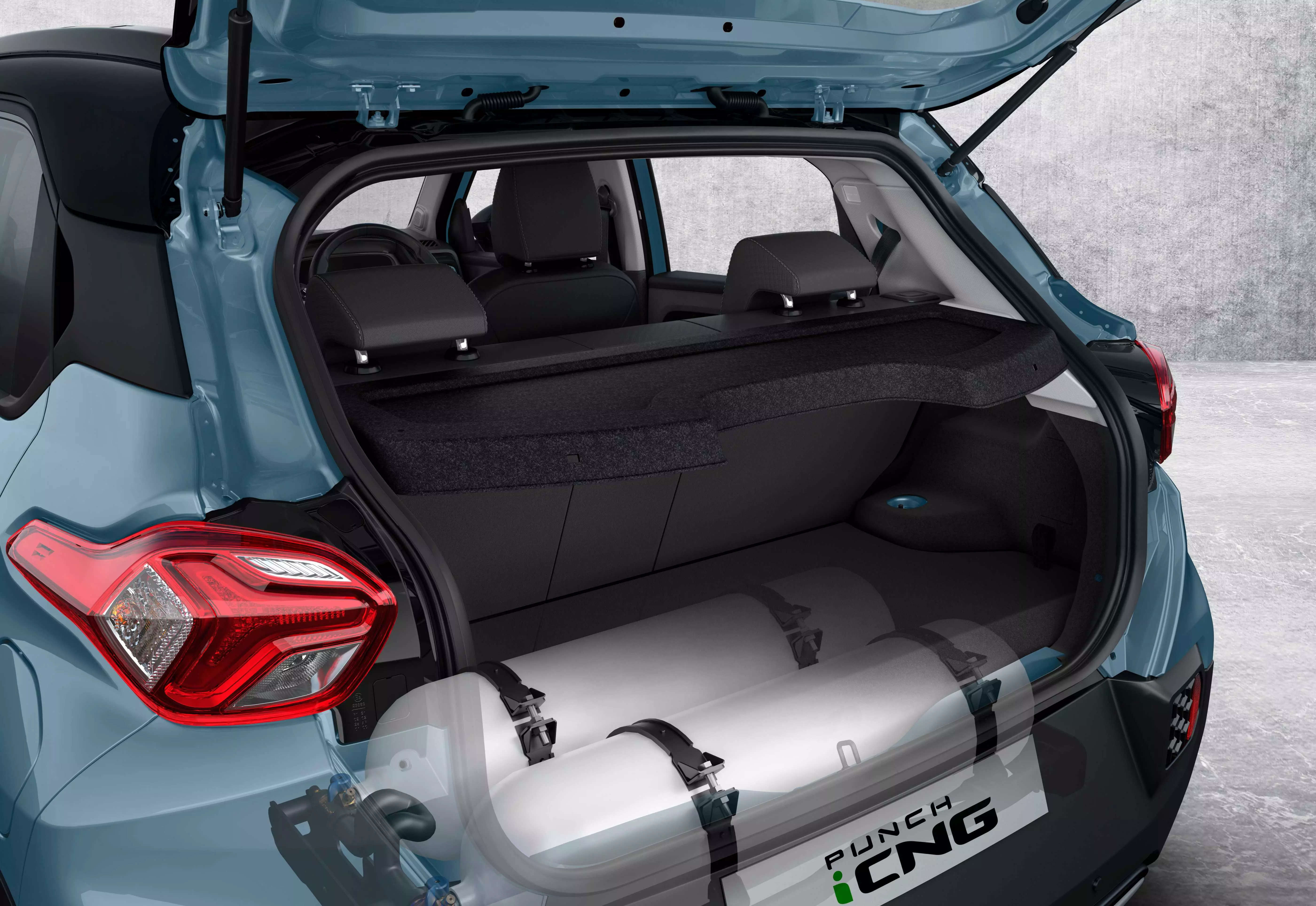It comes as no surprise that the Tata Punch is the third best-selling car in India. Tata sold almost 14,000 units of the Punch in December 2023. This little SUV has got many things going for it. It offers stellar value undercutting all compact SUVs in India. It is one of the safest SUVs in India (GNCAP 5 stars). It comes with a great features list and looks the part for what it claims to be. Above all this, it offers good cabin space, a sorted ride quality and a well put together cabin. If your budget for a new car is within Rs 10 lakh, chances are high the Tata Punch will be on your list. But, this is where it gets tricky.

Tata offers the Punch with a petrol engine, a CNG or as a full-electric, making it one of the few cars in India that offer both ICE and electric powertrain options. Yes, the Punch EV is priced substantially higher than the other two, but you also save on running costs in the long run. So, is it the Punch EV or the Punch Petrol, or perhaps the Punch CNG that works best for you? Here’s a comprehensive comparison of these three SUVs to find out how they exactly differ from each.
Tata Punch EV vs Tata Punch Petrol vs Tata Punch CNG: Dimensions
Dimensions | Punch EV | Punch Petrol | Punch CNG |
Length | 3857mm | 3827mm | 3827mm |
Width | 1742mm | 1742mm | 1742mm |
Height | 1633mm | 1615mm | 1615mm |
Wheelbase | 2445mm | 2445mm | 2445mm |
Ground Clearance | 190mm | 187mm | 187mm |
Boot Space | 366 litres | 366 litres | 210 litres |
The Punch EV, Punch Petrol and the Punch CNG are essentially the same cars, right? However, the numbers tell a different story. The Punch EV is longer than its counterparts, but this is down to the distinct design with a bespoke bumper design for the EV. Width is the same across all three at 1742 mm but the Punch EV sits higher than the other two at 1633 mm which is not a lot. However, the Punch EV offers 3mm more ground clearance at 190mm in contrast to the other two. Lastly, the Punch EV also offers 366 litres of boot space, which it matches with the Punch petrol. The Punch CNG only offers 210 litres of boot space as some space is eaten up by the CNG tank which is situated cleverly under the boot floor.

Overall, looking at the big picture, the Punch EV edges ahead although the difference is not substantial enough to be a deal-breaker.
Tata Punch EV vs Tata Punch Petrol vs Tata Punch CNG: Powertrain
Parameters | Punch EV | Punch Petrol | Punch CNG |
Powertrain | Permanent Magnet Synchronous Motor - 60/90kW | 1.2-litre Revotron Petrol Engine | 1.2-litre Revotron CNG Engine |
Transmission Options | Single speed | 5-speed MT/AMT | 5-speed MT |
Power | 60/90 kW | 87.8 PS | 73.5 PS |
Torque | 114/190 Nm | 115 Nm | 103 Nm |
Mileage/Range | 315 - 421 km | 18.8 Kmpl to 26.99 Km/Kg | 18.8 Kmpl to 26.99 Km/Kg |
The Punch petrol and the CNG make use of the same 1.2-litre Revotron petrol engine. However, the output characteristics of the engine are not identical. The petrol version develops more power and torque figures in comparison to the CNG. The CNG redeems itself by being cheaper to run as it offers more fuel economy. Pitching the EV with the petrol and CNG versions is not an apples to apples comparison. The Punch EV develops more power, torque and offers a commendable claimed range anywhere between 315 to 421 km depending upon the variant of choice.

It comes down to the use case – if you primarily use your car in an urban setting with access to good charging infrastructure, we don’t see any reason why we would suggest against the Punch EV. But, if you do frequent highway trips or road trips to remote areas where charging networks are not that prevalent, the Punch petrol or the CNG would be a sensible pick.
Tata Punch EV vs Tata Punch Petrol vs Tata Punch CNG: Features & Comfort
Features | Punch EV | Punch Petrol | Punch CNG |
Infotainment system | 10.2-inch touchscreen infotainment system | 7-inch touchscreen infotainment system | 7-inch touchscreen infotainment system |
Music system | Yes | Yes | Yes |
Climate control | Yes | Yes | Yes |
Ventilated seats | Yes | No | No |
Adjustable steering | Yes | Yes | Yes |
Drive modes | Yes | Yes | Yes |
Instrument cluster | Digital | Part Digital | Part Digital |
Sunroof | Yes | Yes | Yes |
Adjustable seats (manual or electric) | Manual | Manual | Manual |
Rear AC vents | No | No | No |
60:40 rear seat split | Yes | Yes | Yes |
Cruise control | Yes | Yes | Yes |
In terms of basic features, all three SUVs offer more or less the same level of kit. But, dig deeper and it is obvious that the Punch EV is much better equipped. All three iterations of the Punch come with a touchscreen infotainment system, cruise control, auto headlamps, rain sensing wipers, climate control, and a sunroof. But the Punch EV goes a step ahead and offers wireless charging, bigger 10.2-inch touchscreen, fully-digital instrument cluster, leather seats, air purifier, 16-inch alloy wheels, and ambient lighting.
If the number of features influences your buying decision, the Punch EV is the clear winner as it offers way more features and a cabin with better quality materials resulting in a premium feel.
Tata Punch EV vs Tata Punch Petrol vs Tata Punch CNG: Safety Features
Features | Punch EV | Punch Petrol | Punch CNG |
GNCAP Safety Rating | Yet to be tested | 5 stars (GNCAP) | 5 stars (GNCAP) |
Airbags | 6 airbags | 2 airbags as standard | 2 airbags as standard |
ABS with EBD | Yes | Yes | Yes |
ESC | Yes | Yes | Yes |
Traction control | Yes | No | No |
Automatic headlamp | Yes | Yes | Yes |
Rain-sensing wipers | No | Yes | Yes |
Hill hold assist | Yes | Yes | Yes |
Hill descent control | Yes | No | No |
Rear sensors | Yes | Yes | Yes |
Rear parking camera | Yes | Yes | Yes |
ISOFIX Child seat anchor points | Yes | Yes | Yes |
ADAS | No | No | No |
The Punch EV is without doubt the most-loaded of the trio. In terms of safety kit, it comes with 6 airbags as standard, 4 wheel disc brakes, 360° Surround View Camera System, blind spot monitoring system, and hill descent control. The Punch Petrol and Punch CNG misses out on these features. However, the Punch petrol still remains one of the safest cars in India with a 5-star GNCAP rating for crashworthiness. In contrast, the petrol and CNG versions fall short of some extra safety kit. With that said, the Punch EV is still yet to be tested by an authoritative agency.

Despite the variant of choice, the Punch is one of the safest cars in India and you won’t go wrong with it if safety is a high priority.
Tata Punch EV vs Tata Punch Petrol vs Tata Punch CNG: Price Comparison
Variants | Punch EV | Punch Petrol | Punch CNG |
Base Variants | Rs 10.99 lakh | Rs 6.13 lakh | Rs 7.10 lakh |
Mid Variants | Rs 11.49 to Rs 13.79 lakh | Rs 6.38 to Rs 7.98 lakh | Rs 8.85 to Rs 8.20 lakh |
Upper Mid Variants | Rs 13.99 to Rs 14.99 lakh | Rs 8.00 to Rs 9.47 lakh | Rs 8.85 lakh |
Top Variants | Rs 15.49 lakh | Rs 9.60 lakh | Rs 9.68 lakh |
When we come to the pricing, this comparison moves to a different conversation altogether. For perspective, the Punch EV’s pricing starts at Rs 10.99 lakh for the base variant which is more than Rs 1 lakh dearer than the top-spec Punch Petrol or the Punch CNG. And the range-topping variants of the Punch EV are priced north of Rs 15 lakh (ex-showroom). So, from an outright value perspective, the Punch EV’s achilles heel is its pricing. Since it is an all-electric with low running costs, you will certainly save on annual fuel and maintenance expenses along the way. But for it to break even, it might take a while.

The Punch Petrol offers the most value here with prices starting from just Rs 6.13 lakh for the base version going all the way to Rs 9.60 lakh. It is comparatively more affordable than the CNG counterpart, although the margins are not that high to be a deal-breaker.
From a pure ex-showroom cost point of view, the Punch petrol offers the most value, followed by the Punch CNG and the Punch EV. But, it is not as straightforward as it looks with the running cost savings attached to EVs.
Summary
Like we established, the Punch EV, Punch Petrol and the Punch CNG are essentially the same cars underneath. But there’s a crucial difference in the powertrain setup that separates these three. If you are a buyer who wants an EV today, the Punch EV is one of the best options out. It is also more affordable than the Nexon EV, making it a good choice if you can do with a smaller SUV. The Punch EV makes a strong case for itself if you are specifically looking for an urban EV with proportions that are easy to navigate. Yes, it does offer a lower range than the Nexon EV, but it is also considerably cheaper.
If you are a buyer who is confused between these three versions, we have got a solution for you. If you use your car daily in an urban setting, within 200-250 kms, it is better to stretch your budget and get the Punch EV instead of the Punch. It offers more features, a premium experience, zero emissions from the tailpipe and fuel savings that will add up to a huge amount every year. That said, do look at the charging infrastructure in your city to make sure it is practical before you take the plunge.
If you can’t stretch the budget, and you still want a small SUV under Rs 10 lakh, the Punch petrol or the Punch CNG should do the job. After all, it is a highly ranked compact SUV that seems to have hit the mark with Indian buyers. The Punch CNG is also a great option if you don’t mind the reduced boot space and the reduced engine output figures in contrast to the standard variant.



 ne big family!
ne big family!